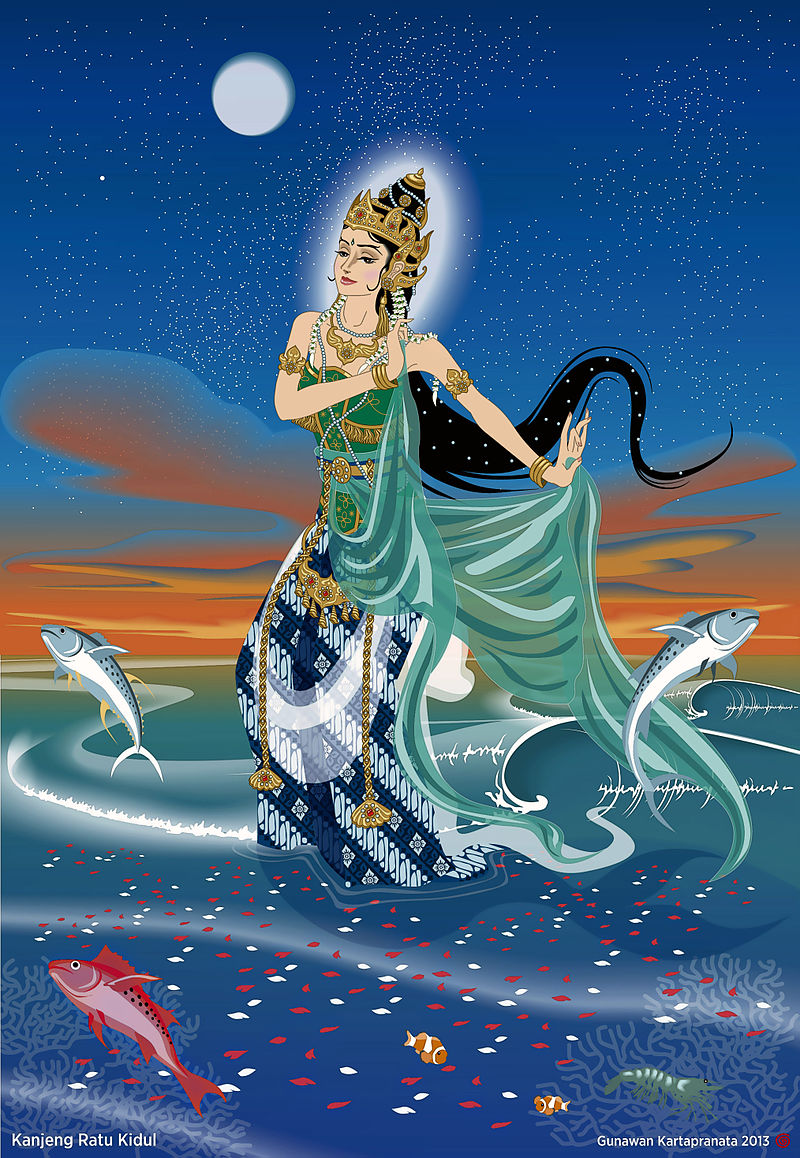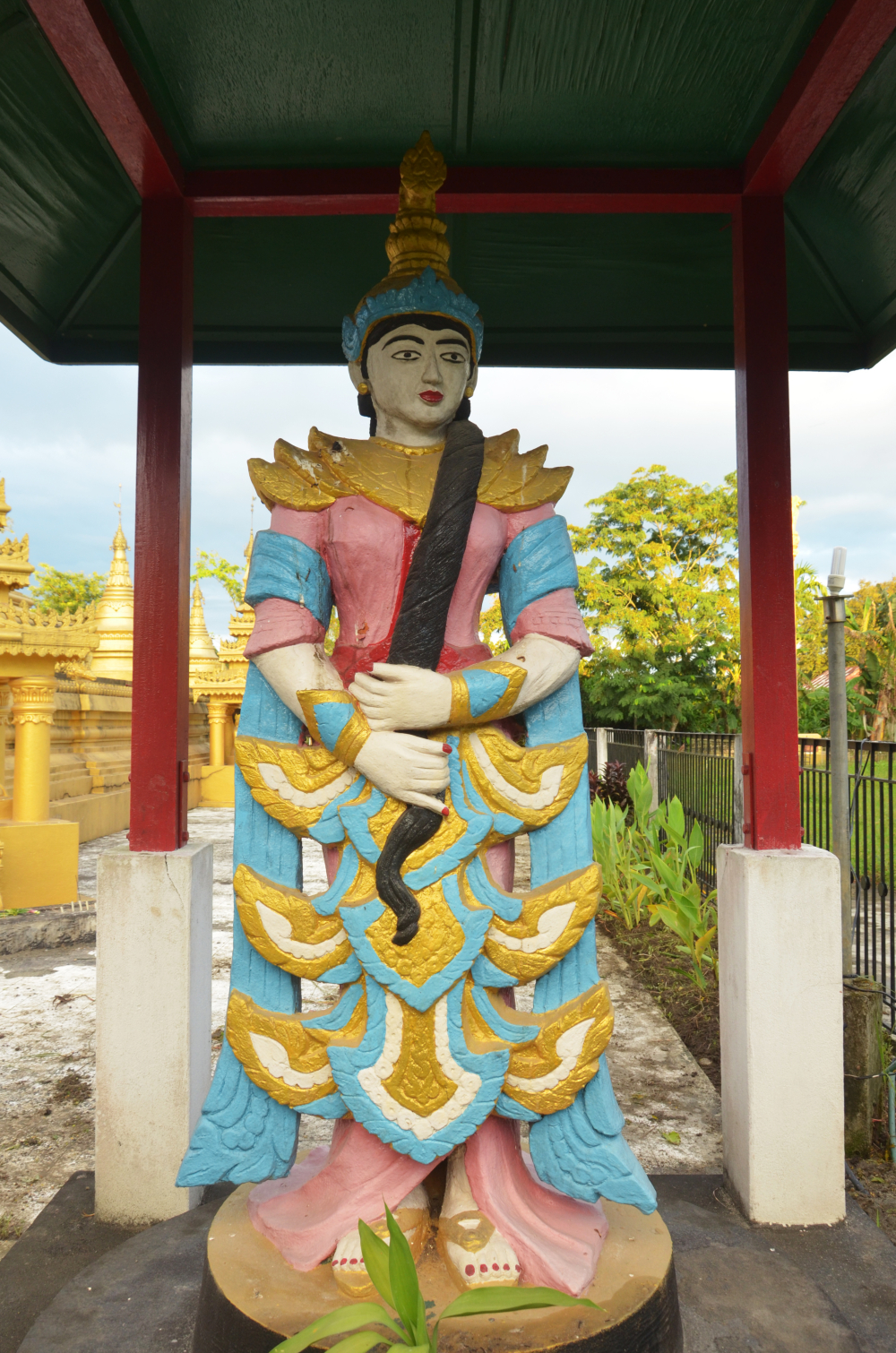
The legends around the mermaid goddess Kidul – also Ratu Kidul – are mostly linked to the 16th century Javanese Mataram Sultanate. However, anthropological studies suggest that the myth of the Queen of Java’s Southern Seas probably originated from older prehistoric animistic beliefs in the pre-Hindu-Buddhist female deity of the southern ocean. The fierce waves of the Indian Ocean on southern Java’s coasts, its storms and sometimes tsunamis, probably had raised in the locals awe and fear of natural power, and locals attributed it to the spiritual realm of deities and demons that inhabit the southern seas ruled by their queen, a female deity, later identified as “Queen Kidul”. (from wikipedia)
